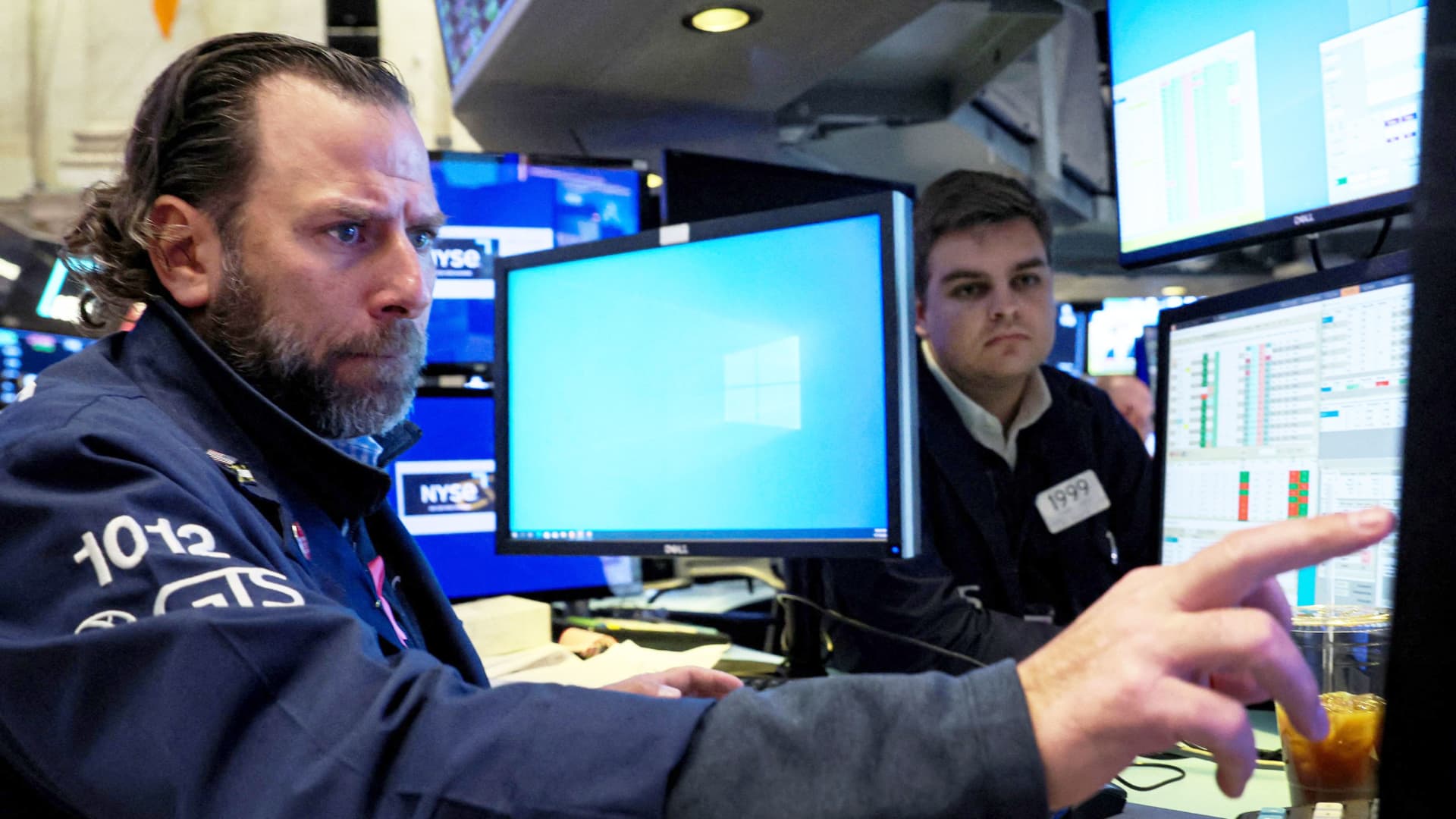The stock market is trapped in a clear downtrend, and the situation could get worse

Stocks have lost short-term upside momentum, and now the market looks stuck in a longer-term downtrend with no end in sight. Many market strategists expect the S & P 500 will take aim at retesting the lows in the first quarter, as earnings look weaker, recession fears rise and the Federal Reserve keeps tightening policy. Strategists who watch charts have a similar outlook. They are watching the S & P 500 as it trades below its 200-day moving average after lifting above that threshold briefly. The 200-day is a closely watched momentum indicator, reflecting the average of the past 200 closing prices of a security or index. When the index breaks above it, that’s a positive momentum sign. The S & P 500 surpassed the average on Nov. 30 and fell below it Monday. The 200-day is now at 4,040 for the broad-market index, and the S & P 500 closed at 3,933.92 on Wednesday. A loss of short-term momentum “I think the real story is within the downturn, we’re losing short-term momentum. The short-term relief rally has seemingly lost its hold,” said Katie Stockton, founder of Fairlead Strategies. “We all have different ways of measuring these things. For me, the downtrend is intact and just in part because it has a lower high.” Stockton said her indicators showed the flip in the S & P 500 Tuesday. Mike Wilson, Morgan Stanley’s chief U.S. equity strategist, said he is positioning to stay out of the downdraft’s way. “While the index has modestly exceeded its 200-day moving average and the breadth continues to expand, the downtrend from the beginning of the year remains in place,” wrote Wilson. “This makes the risk-reward of playing for more upside quite poor at this point, and we are now sellers again.” Wilson said his tactical range had been 4,000 to 4,150, and the S & P 500 traded into that range last week. Chris Verrone, head of the Strategas technical and macro research team, said he sees another test of the lows approaching. He also does not expect the usual positive December seasonality to work as well this year. “If you enter December in a hole, don’t expect to get bailed out,” he said. “I’ve been unconvinced all year that we had that flush moment, that ‘you don’t want to get out of bed’ moment. I suspect that’s still in front of us.” Verrone said he expects the current top of the range would be 4,200 to 4,300 for the S & P 500. “It’s hard to get below 3,400, 3,500,” he said. “I still think that’s the low of the range, and I would not be surprised if we saw it again. There’s something off right now, and I think the banks are telling us that.” Notable weakening in other corners of the market Verrone said the banks started to underperform recently. “They know something, and that’s enough for me to move to the sidelines,” he said. “They lagged on the rally and now they’re going down more, as the market declines. Something’s up there. The market seems uncomfortable with something.” Verrone also notes that bond yields have been lower in the past few days, and still tech can’t get a bid. “I think in markets like this, ownership is your enemy. Where is there still the most ownership? It’s in names like Apple. There’s danger in safety,” he said. Fairlead’s Stockton said she put a sell on financials Wednesday. She now is overweighting defensive sectors that are displaying relative strength. That would be consumer staples, health care and utilities. Indeed, the S & P 500’s financial sector is down 4.8% for December, while consumer staples and utilities are off by more than 1%. Health care is lower by 0.4% for the month. Morgan Stanley strategists are eyeing the same sectors. “As one final note in that regard, we expect inflation to fall fast in 2023. While that decline will allow the Fed to pause as early as January, equity investors need to be careful what they wish for,” Morgan Stanley’s Wilson wrote. He added that falling inflation is also part of a negative thesis, which is behind his well-below consensus earnings forecasts.









